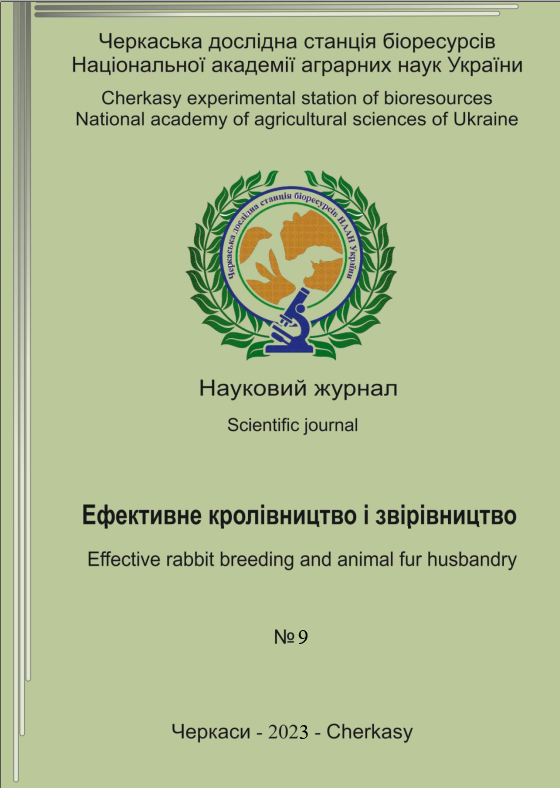DEGREE OF IMPLEMENTATION AND VARIABILITY OF INDICATORS OF REPRODUCTIVE ABILITY BY MINKS OF DIFFERENT COLOR TYPES
DOI:
https://doi.org/10.37617/2708-0617.2023.9.19-25Keywords:
reproductive capacity, mink, generation, inheritance, male influenceAbstract
According to the results of a retrospective analysis, a study of the indicators
of the reproductive capacity of minks of brown standard color, brown "wild" color,
and silver-blue color of the fur farm of the Limited Liability Company Cherkaska
Oblspozhivspilka of three generations (n = 1379 animals) was carried out, and the
peculiarities of variability and the nature of the inheritance of the studied
indicators in minks in a number of generations were determined.
The study of the fertility of mink females of different generations of different
color types indicates the variability of this indicator over the years in females. For
females of standard dark brown color, the fertility rate in minks of the original
stock was 7.87 heads per female. The results of female puppies in the next
generation were probably lower by 0.96 heads (p<0.001). In the third generation,
the fertility of females of this type of mink decreased by 1.29 heads (p<0.001).
For brown "wild" minks, the highest recorded rate of fecundity for this
particular group of animals was seven heads per female pup producer in the
second generation of minks. This indicator is 0.57 heads higher than the similar
indicator of the third-generation females and 0.35 heads higher than that of the
original stock females (p<0.05). Characterizing the fertility indicators of mink
females of these groups, it is worth noting that there was a tendency to increase the
variability of this indicator in females of subsequent generations, from 21.3 to
33.4% in females of standard dark brown color and from 19.5 to 31.7% in females
of brown "wild" color.
The analysis of fertility indicators in silver-blue mink in a number of
generations indicates an insignificant difference in the average values of the
investigated trait, which were within 6.12–6.28 heads. As in females of brown
"wild" color, the highest fecundity was registered in minks of the second
generation and the lowest in the descendants of the third; however, when
comparing the average values, no significant difference was established (p > 0.05).
The obtained data indicate relatively low heritability coefficients, regardless
of the mink genotype. For animals of standard color, this indicator was 0.20-0.24; for minks of the remaining groups, the established coefficients had slightly lower
values, which indicate a significant influence of paratypic factors on the course of
reproductive function.
A relatively high indicator of the share of influence (32%) was obtained for
the group of females of brown "wild" color. The minimum value of the influence of
the father was obtained for the group of minks of silver-blue color, where the value
of the strength of influence was registered at the mark of 6%; for minks of the
group of brown "wild" color, the corresponding value was equal to 10%.


